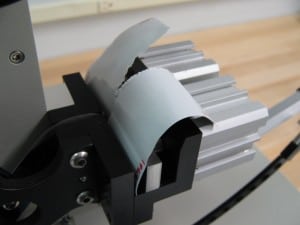 In our previous blog post, we discussed some of the common problems with tensile testing of films. The next test in our series of blog posts will focus on tear resistance testing.
In our previous blog post, we discussed some of the common problems with tensile testing of films. The next test in our series of blog posts will focus on tear resistance testing.
Tear resistance testing is another common type of test used to characterize films. The most common tear tests are ASTM D1004, ASTM D1922 and ASTM D1938.
One important consideration for tear testing is choosing the method that is most applicable to the material being tested. If the material is prone to tearing off-center, consider using a method like ASTM D1004 where the sample geometry encourages tearing in a specific area and direction. Another factor in choosing the most relevant test method are the properties that need to be determined such as initiation force, propagation force, average tear force or total energy. ASTM D1922 will only yield the average tear force, ASTM D1004 will yield the tear initiation force and ASTM D1938 can be used to determine all of the above properties.
Be mindful to align the direction of tear with material orientation during sample preparation. The direction of tear is dependent on sample geometry thus labeling the orientation of the film is important.
This blog post was adapted from a recent article by Amy Peterson, DDL’s P&M Lab Manager.